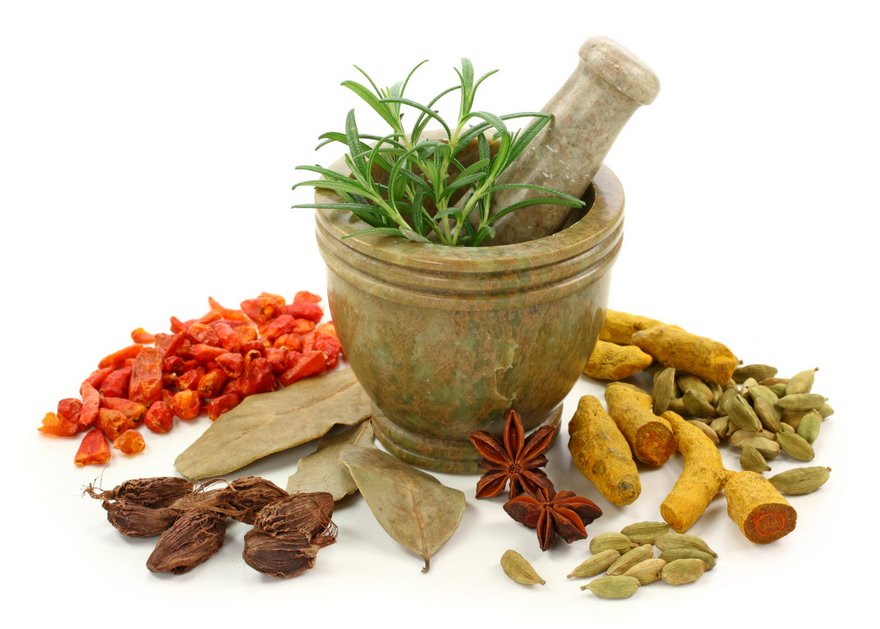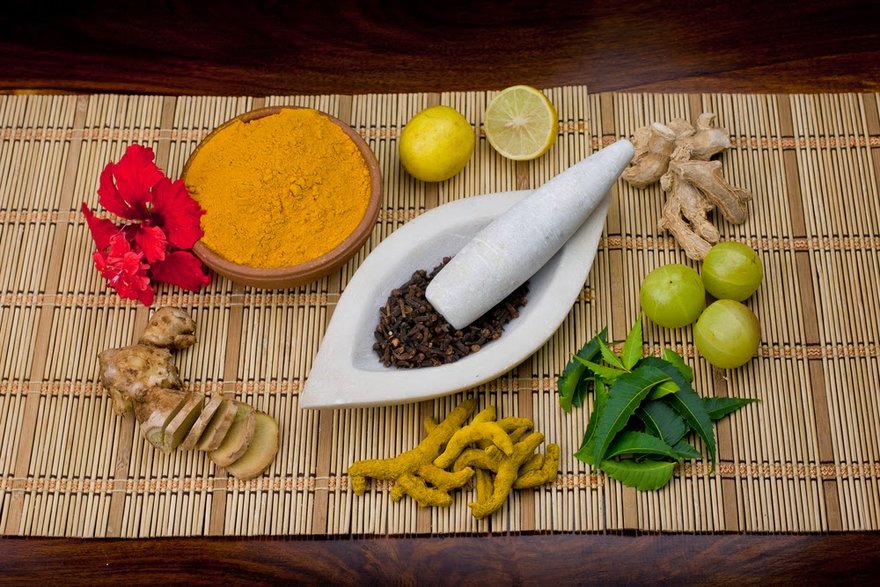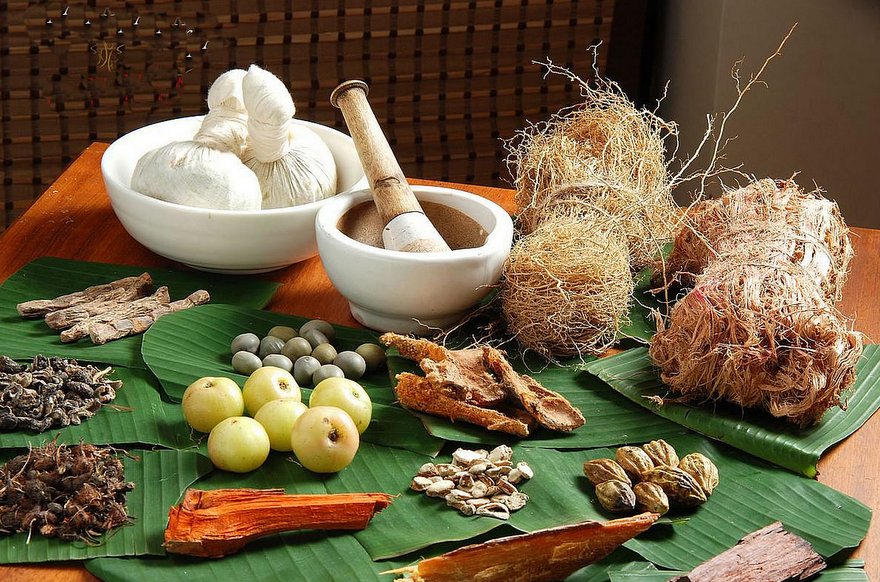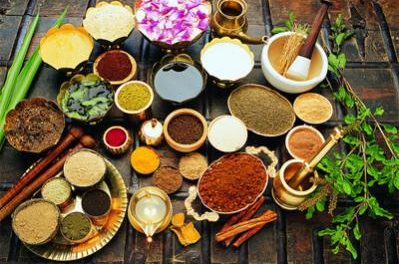Most of the ayurvedic medicines contain 3 or more ingredients. Rarely we find medicines prepared out of single herb or two. In fact, many of them contain 10 – 20 medicinal herbs. Around 10-15% of the formulations possess more than 40 herbs.
Uniqueness of Ayurvedic medicines:
1. Digestive / Carminative Ingredients:
Ayurveda believes that most of the diseases are caused due to mandagni (indigestion). So, most of the Ayurvedic medicines contain at least one herb possessing digestive and carminative property. Thus, depending upon the formulations, Maricha (black pepper), Shunti (ginger), Pippali (long pepper), Hingu (asafoetida), Jeeraka (cumin seeds), etc., are added in permutation and combinations.
[wp_ad_camp_1]
2. Catalyst , Bio-Enhancer (Yogavahi)
Ayurveda usually prescribes a Yogavahi herb (which carries the active ingredient to the required site of action – target cells). A few of the drugs are well known for this action.
Trikatu Churna – Combination of pepper, long pepper and ginger Act as bio availability enhancer, when used in combination with other medicinal herbs. They increase the availability of medicinal phyto-chemicals at the site of therapeutic action.
Madhu (honey),
Ghrita – Cow ghee
Yashtimadhu (Indian liquorice), are included in the formulation for the same reason.
3. Wide Variety of Herbs:
Many herbal ingredients are bitter or astringent in taste, some have offensive smell – like Acorus, Paederia foetida. On the other side, many possess sweetness like sugar candy, jaggery, honey, ghee or else the aromatic substance like cardamom, bark of cinnamon, cumin seeds, leaves of cinnamon etc. In few of the formulations, natural coloring agents are also added like Turmeric, Manjista, Daruharidra etc.
Along with the above said benefits, they contribute therapeutic action too. Hence, while adding these additives enough care is taken so as to contribute synergetic benefit or else to avoid antagonistic action of the pre existing ingredients of the therapeutic benefits.
4. Different Dosage Forms Based on Need of the Patient:
Form of medicine too makes the formulation unique. Each kind of pharmaceutical form like Lehya (herbal jam), Asava (liquids), Choorna (herbal powder mix), Tablet, juice extracts.

Kashaya (herbal decocotion) etc are advocated with particular intentions. Usually the form of the medicine is selected based upon the stage of the illness. For example, when digestion strength is good, but patients need nutrition, Avaleha (herbal jams) like Chyawanprash, Agastya Rasayana etc are selected. When the patient’s digestion strength is low, then spicy Churnas like Hingvashtak Churna or Vaishvanar Churna are administered.
5. The Time of Intake of Medicine:
It also brings significant change in the action of the drug. The medicine which should be prescribed in after meals if prescribed in empty stomach may cause gastric irritation. Likewise 11 different specific time duration have been told for the intake of the medicine, depending upon the disease, stage of the illness and type of formulation.
Thus each Ayurvedic medicine is unique in its quality, action and use depending upon the disease and the individual’s body constitution while prescribing herbal and herbo-mineral preparation. These factors are to be given much emphasize and priority in routine practice.
Source: easyayurveda.com










